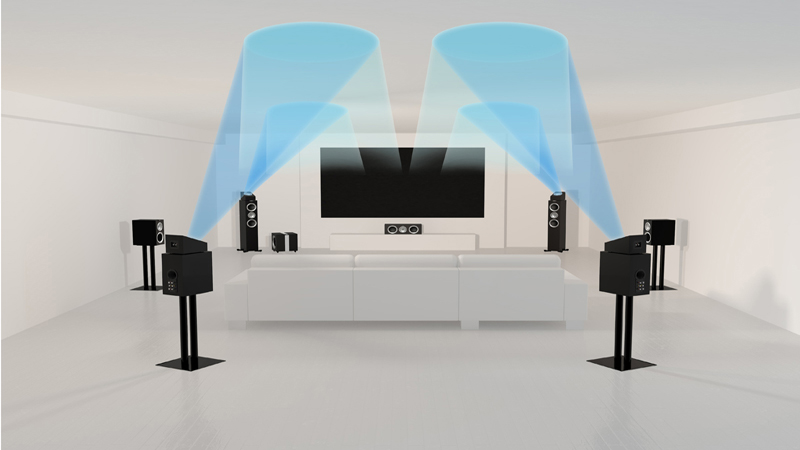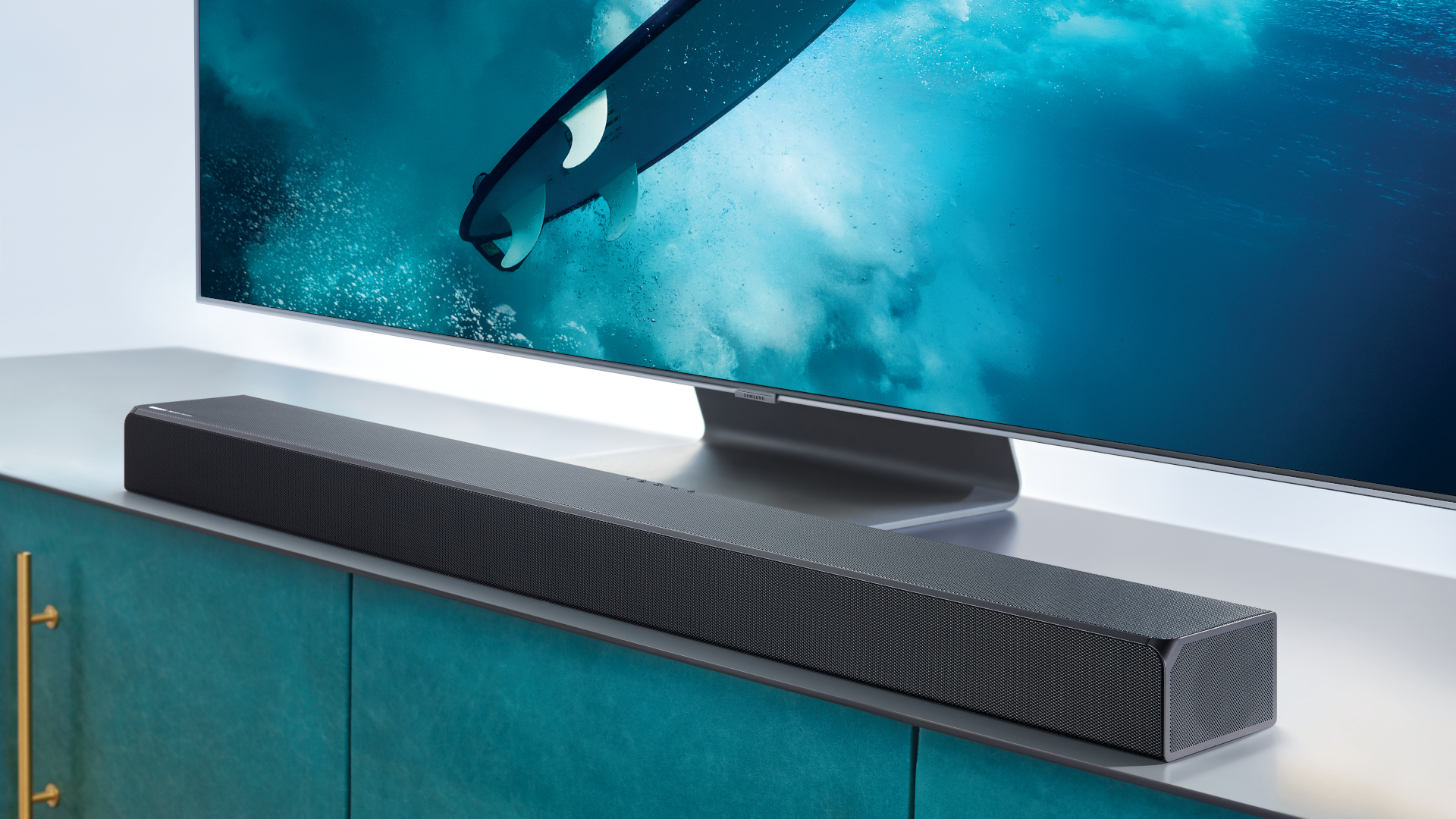How Dolby Atmos can bring paintings to life
Dolby Atmos isn’t only for big blockbusters

When you hear the name Dolby Atmos, the immersive 360-degree virtual surround sound technology, you may think of big-budget blockbusters with bone-rattling explosions, pounding gunfire, and dazzling orchestral scores.
But Dolby Atmos isn’t just about making the loudest noise possible. In fact, the technology can be used in far more subtle, nuanced ways, to enhance shows and films you never would have previously associated with the object-based surround sound.
One such show is Sky Arts’ Portrait Artist of the Year, in which a panel of judges seek to uncover the UK’s next rising star in portrait painting. Contestants are challenged to produce striking portraits of famous sitters, with the winner awarded a £10,000 (around $12,000 / AU$18,000) commission to paint a celebrity – the resulting picture winning a coveted place in a national gallery.
Filmed in Battersea Arts Centre in London, the show is set against the backdrop of a grand gallery, with the scratching of paintbrushes on canvas and the murmuring of guests echoing around the cavernous hall.
It’s a relaxing, wholesome watch – and absolutely not the kind of program you’d expect to benefit from the cinematic sound of Dolby Atmos. We visited Sky Studios in West London to see its newly Dolby Atmos-certified mixing studio to find out why the technology is in fact perfect for Portrait Artist of the Year.
What is Dolby Atmos?
There are lots of speaker styles to choose from – that's why we've put together lots of guides on the best speakers you can buy in 2019.
Looking for some Hi-Res audiophile speakers to go with your record player? Check out the best stereo speakers. Bored of your TV's lackluster audio? Try one of our best soundbars on for size.
If you need a speaker you can take everywhere, make sure you look at the best waterproof speakers.
For total control of your smart home, invest in one of the best smart speakers, which come with Google Assistant, Amazon Alexa, or Siri built-in.
Dolby Atmos is an audio format, just like stereo sound or surround sound, taking recorded audio from a movie soundtrack, sporting event, or video game, and processing it to sound more immersive.
Unlike stereo or surround sound, however, Dolby Atmos puts the audio in a three-dimensional space, making it feel as though sound is coming at you from all angles – for example, making the sound of a helicopter appear as though its whirring overhead.
Sign up for breaking news, reviews, opinion, top tech deals, and more.
This process happens in sound studios where sound designers and dubbing mixers take this audio and digitally move it this virtual 3D space. When you play the movie back using Dolby Atmos-enabled audio devices, you'll be able to hear the sound effects move around you, just like the audio engineers intended.
Many cinemas are now decked out with Dolby Atmos equipment, which use overhead speakers to immerse movie-watchers within a bubble of sound. It’s not only relegated to cinemas though; an increasing number of home audio gadgets, including soundbars, wireless speakers, and hi-fi systems incorporate Atmos technology to achieve a similar effect in your living room.
It’s viewers with this kind of kit that Sky is targeting with its increasing roster of Atmos-enabled shows.

Building the studio
Built over the last year, Sky’s new Dolby Atmos mixing studio has been a labor of love for the broadcaster’s audio team manager, John Cochran, who told us that he “jumped at the chance” to create the new space.
Sky’s partnership with Dolby began long before this however, with Sky Sports launching the virtual surround sound technology in 2017 for its Premier League football coverage – in the years since then, Sky’s Dolby Atmos output has evolved to Rugby, pay-per-view boxing, as well as original drama.
Atmos makes perfect sense in the arena of live sports, where it can transport you to the game, with the cheers of the crowd coming at you from all angles. But how can the technology bring a comforting painting program to life?

The art of subtlety
For Dolby’s head of home content engineering, Rob France, it’s all about conveying the beauty of a space – something the Battersea Arts Centre has in spades.
“We have so many lovely spaces that sound beautiful when we’re in them – and stereo and 5.1 don’t bring about that naturally beautiful sound,” he explains.
“What we want to do is bring about that feeling of being there – and the interesting thing about Portrait Artist of the Year, is that it’s fundamentally a visual show; it’s about people painting portraits.”
It may not be the kind of show you’d expect to benefit from Dolby Atmos, but as France explains, having audio at the forefront of the viewing experience “really helps to put the viewer in that space and give a sense of what the contestants hear around them” – and that gives viewers at home an insight into the pressures they face by performing in that pressured environment.

Sound designer Finn Curry explains that the use of multidirectional dialogue combined with the echoic nature of the Arts Centre gives the audio “a rich feeling” by “enhancing what’s already there”, rather than adding fantastical effects that would detract from the show itself.
He says, “the program has a gentle feeling of time passing, with people talking about the way they paint” – and it’s his job to enhance these hushed snippets of dialog, as well as giving prominence to the reverberant sound of the hosts giving instructions to the contestants.
As the hosts interject, their voices naturally bounce around the walls of the Arts Centre – something that is lost in traditional stereo sound.
With Dolby Atmos, their voices are given a sense of height, reverberating around the studio as they would in the space itself – this provides a true sense of immersion for the viewer, making you feel as though you are in the hall with them.
This also makes it easier to understand how the contestants may be feeling; as the judges tell them that they can begin painting, their voices cut through the hushed chatter and subtle background music, and you feel the nervous anticipation of the artists as they pick up their brushes.
It’s not just about adding drama; the use of Dolby Atmos means that you can hear sounds that may not normally come across so clearly; the sound of brushes on canvas, pencil scratching on paper, and the mixing of paints on a palette.
The difference is subtle, but noticeable, and these seemingly minor sonic details build up to create a truly immersive viewing experience; you could easily lose yourself in the gentle ambience of the show.

Looking to the future
Portrait Artist of the Year may sound stunning in a Dolby Atmos-certified studio, but what about viewers at home? Isn’t Sky spending an awful lot of time appealing to just a handful of viewers who have access to Atmos-compatible equipment?
According to Cochrane, it doesn’t matter if there are only a few people out there with Dolby Atmos soundbars and speakers – to him it’s totally worth the effort for Sky “to do the best we can”.
After all, the more shows, films, and video games that support Dolby Atmos, the more likely it is that consumers will start to invest in this kind of equipment – and for Cochrane, there’s no genre that couldn’t benefit from the audio technology.
“I think Dolby Atmos has a tremendous breadth of application, whether it’s television, theatre, or exhibitions.”
With Sky, as well as streaming platforms like Netflix and Amazon Prime Video increasing its Dolby Atmos output, it’s now down to viewers to make a choice between standard sound, and breathtaking immersion.

Olivia was previously TechRadar's Senior Editor - Home Entertainment, covering everything from headphones to TVs. Based in London, she's a popular music graduate who worked in the music industry before finding her calling in journalism. She's previously been interviewed on BBC Radio 5 Live on the subject of multi-room audio, chaired panel discussions on diversity in music festival lineups, and her bylines include T3, Stereoboard, What to Watch, Top Ten Reviews, Creative Bloq, and Croco Magazine. Olivia now has a career in PR.